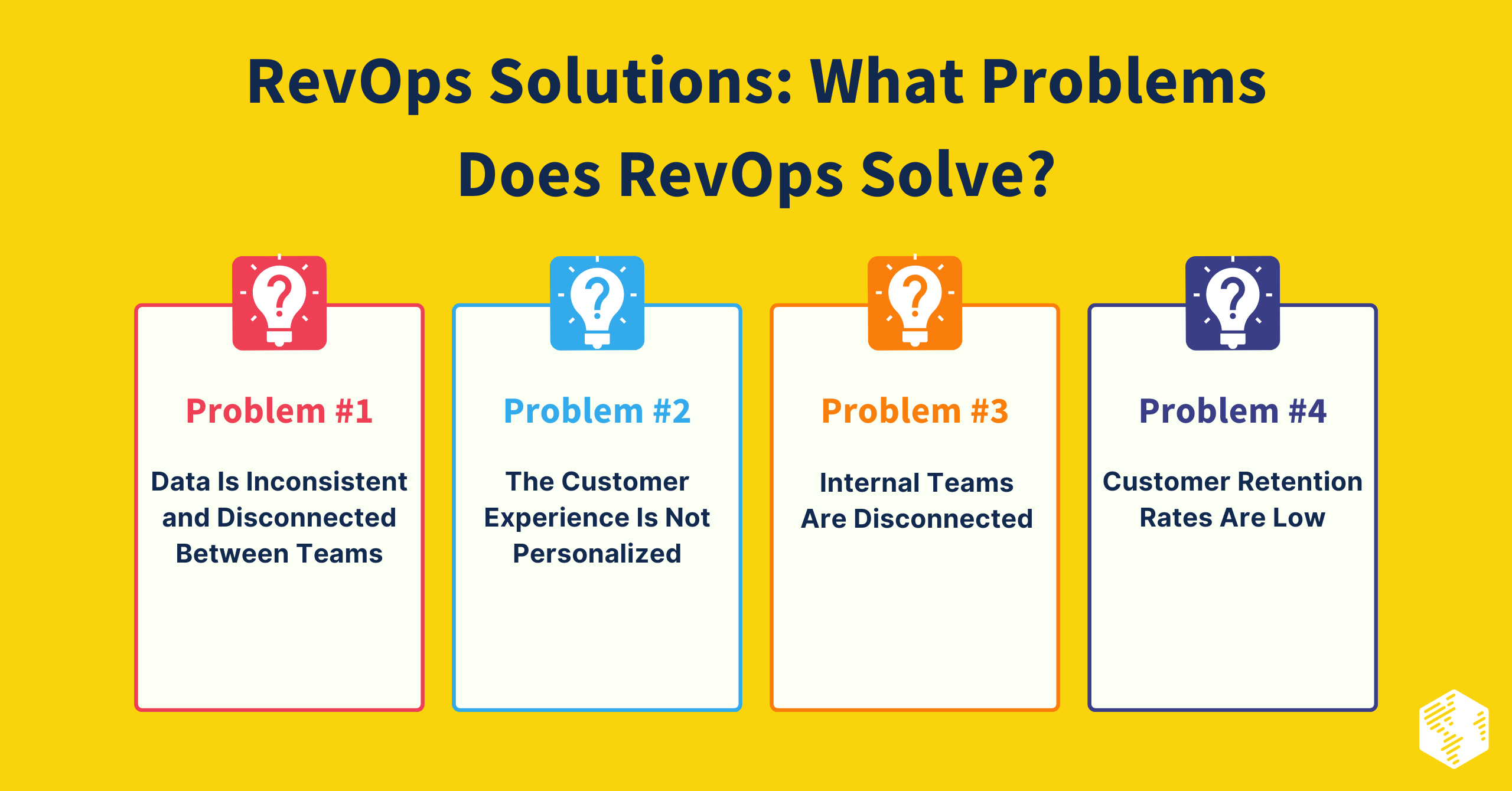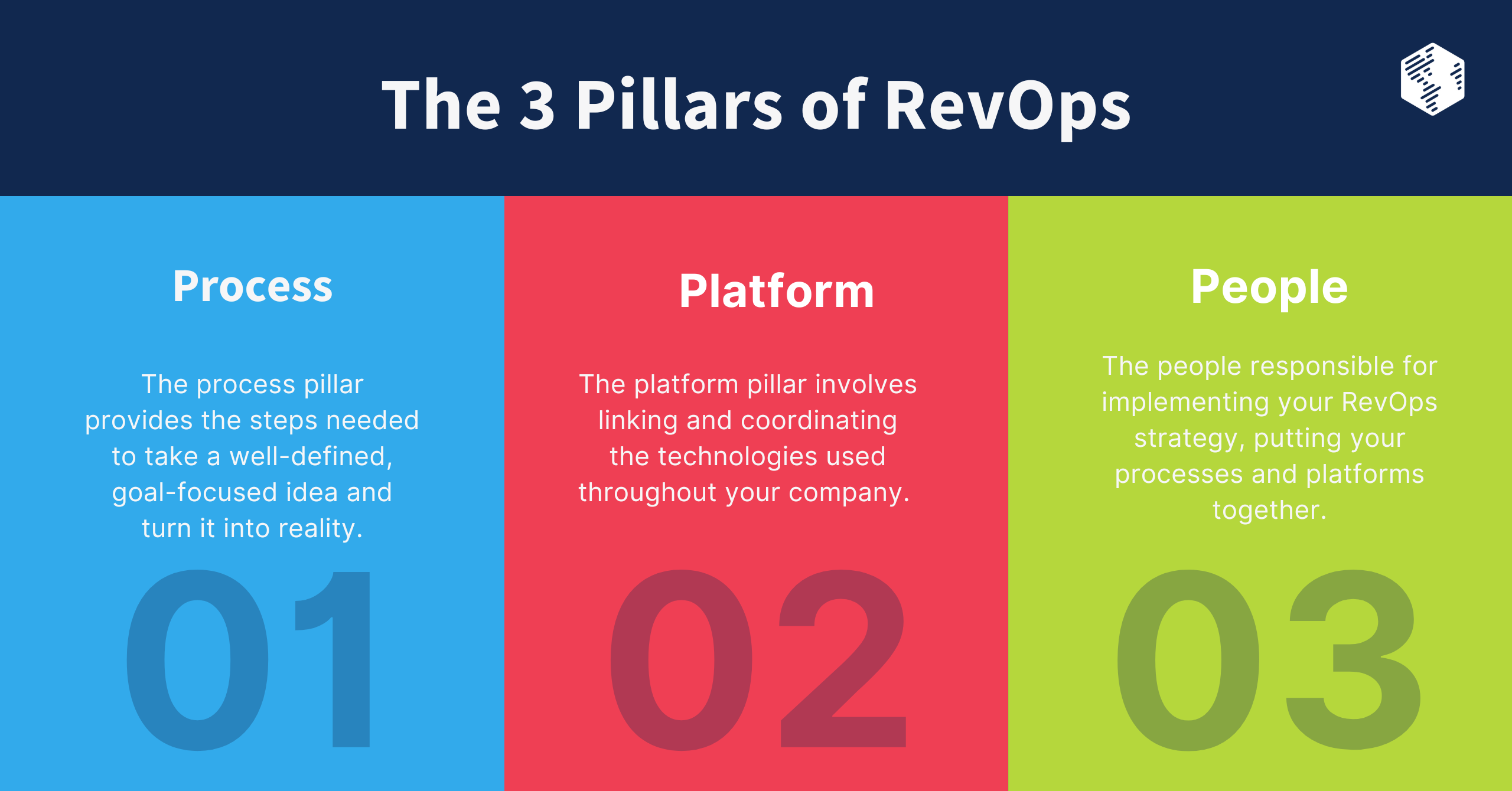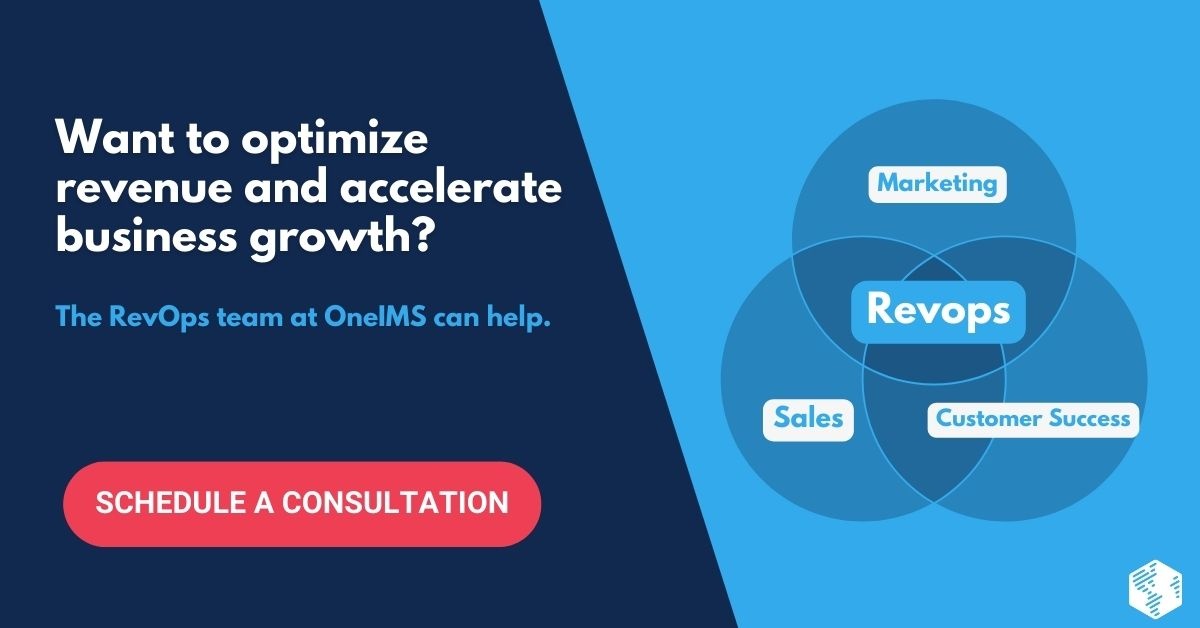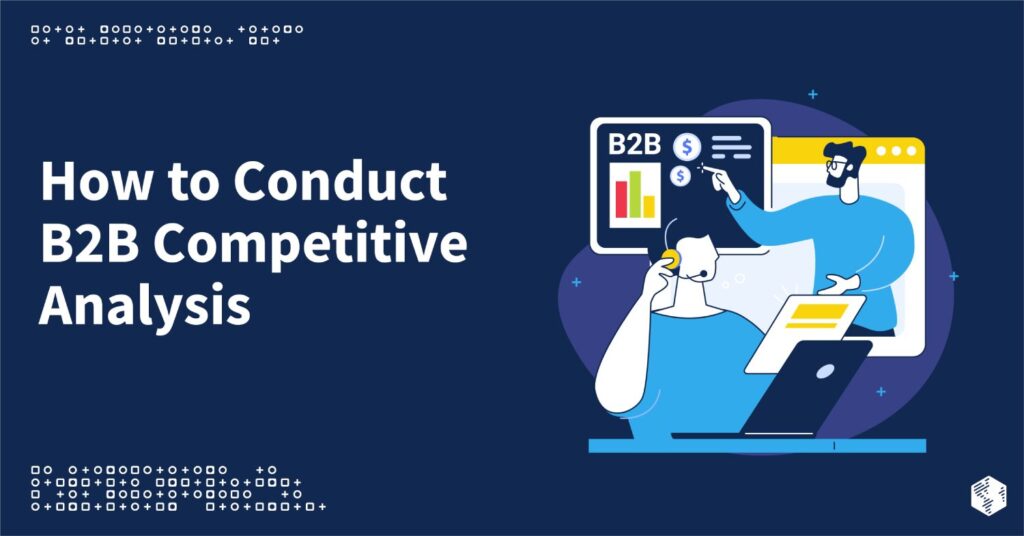Today’s most successful business enterprises are powered by data and technology. Marketing, sales, and customer success departments in companies across a variety of industries are reshaping their relationships with other customer-facing teams and technologies—focusing on using powerful, accurate data to provide excellent customer experiences, generate new revenue, and improve organizational efficiency. But in order to do so, these teams need to be aligned and on the same page.
RevOps is the key to making that alignment happen and, by extension, minimizing friction and maximizing revenue.
Who Drives Revenue?
In the digital age, sales isn’t the sole department responsible for generating and maintaining revenue. Since customers want a personalized experience each time they interact with a business, the efforts of the marketing and customer success departments on either side of the buyer’s journey directly affect the amount of revenue generated.
These trends indicate that focusing on delighting customers throughout their entire relationship with a company (as opposed to just during the sales process) generates happy customers who give referrals and increases overall customer lifetime value (CLV). If we think about revenue from the perspective of maximizing the customer experience, it becomes clear that the customer-facing departments and the revenue-driving departments are one and the same. These revenue-driving departments are marketing, sales, and customer success.
What Is RevOps?
Revenue operations, or RevOps, is an organizational methodology that seeks to align marketing, sales, and customer success under similar strategic goals, incentives, and processes. By ensuring marketing, sales, and customer success teams are communicating and collaborating, RevOps unlocks the full growth potential of a business.
One way to visualize the revenue-generating potential of RevOps is through our proven growth formula. This simple framework shows the value in acquiring new customers and retaining current business—both of which require the successful alignment of marketing, sales, and customer success departments. By finding opportunities for revenue growth and identifying gaps in organizational processes, RevOps works hand-in-hand with our growth formula framework to create and execute a data-driven, long-term growth strategy.
If your company wants to improve operational efficiency, drive revenue, automate processes, and grow your customer base, adopting a RevOps framework is the perfect place to start.
What Does RevOps Do?
RevOps brings different customer-facing departments—specifically marketing, sales, and customer success—together to get a clear picture of operations, streamline procedures, and centralize data. It is a means of maximizing the revenue potential of a business by aligning siloed teams and transforming them into a revenue-generating machine.
The primary focus of RevOps is to allow your organization to focus on consistent, positive customer experiences and growth opportunities. With this framework in place, you can examine, restructure, and optimize components at every level of the customer lifecycle as well as streamline internal operations and ensure the alignment of the goals and incentives of your customer-facing departments. The result is a transparent, efficient, and cohesive process across teams and platforms.
RevOps Solutions: What Problems Does RevOps Solve?
An established, well-organized RevOps framework and team can solve many problems for your organization.
Problem #1: Data Is Inconsistent and Disconnected Between Teams
Marketing, sales, and customer success teams often have their own data sets, processes, knowledge, and technology platforms. After adopting a RevOps strategy, these departments will use with one centralized database and tech stack, eliminating data inconsistencies.
Problem #2: The Customer Experience Is Not Personalized
Today’s customers expect a smooth, integrated, personalized experience. In order to achieve this level of seamless personalization, all your customer-facing departments (marketing, sales, and customer service) need to have a comprehensive view of the customer journey and use automated RevOps processes to create a scalable customer experience that feels personalized to each buyer. RevOps also involves generating service level agreements (SLAs) and incentivizing that reach across internal departments to ensure that the handoffs from marketing to sales to customer success are smooth and delightful for the end-user.
Problem #3: Internal Teams Are Disconnected
A RevOps framework rewrites your entire internal structure so go-to-market departments are aligned, using the same data, and working toward the same goals. With the use of automation tools and other software/analytics, RevOps makes it easy for members of different teams to communicate, collaborate, and operate efficiently. RevOps can reduce or even remove entirely the problem of internal “silos” in your organization.
Problem #4: Customer Retention Rates Are Low
Creating a positive customer experience is an essential element of any RevOps strategy. To do so, RevOps teams revamp the processes surrounding every stage of the buyer’s journey; align the goals, data, and incentives of all customer-facing departments; and craft a consistent, exceptional experience for customers. This leads to an increase in CLTV, overall customer satisfaction, and referrals generated for your business.
Why So Many Companies Are Adopting a RevOps Framework
The way customers make purchasing decisions has changed over the last several years. Buyers expect personalization and a smooth, engaging experience at every stage of the customer journey. That means marketing, sales, and customer success departments need to work together and interact in ways they haven’t had to or haven’t been incentivized to in the past. Companies that align these departments are seeing more internal cohesion and revenue growth, and those that don’t are falling behind.
Advances in technology, automation, and data organization have made it possible for businesses to collect, measure, share, and merge information. By implementing these new strategies in your company, you can get a deeper understanding of the entire customer journey. You can also use this data to discover sources of negative friction for both your employees and your customers, giving you an opportunity to develop more efficient communication and processes to ease those friction points.
RevOps is the answer to maximizing growth, aligning disconnected teams, improving the customer experience, and increasing revenue. As companies shift their existing approaches to revenue processes and growth, RevOps is emerging as the preferred option.
The Benefits of RevOps Strategies
How can a RevOps framework grow your business? There are many benefits of implementing RevOps strategies for your company, all of which translate to higher revenue and growth and more efficient scalability.
Here are a few of the benefits of RevOps you can look forward to if you decide to invest in increased collaboration, a unified customer-facing department structure, and streamlined tech stacks.
Enhance Customer Experiences
RevOps strategies are customer-centric. The goal of this model is to optimize processes, improve data exchanges, and provide a seamless transition at each stage of the buyer’s journey—all in an effort to deliver an exceptional customer experience.
With an effective RevOps framework in place, all customer-facing departments have the shared goals and incentives to attract, engage, and delight customers throughout the buyer’s journey and beyond. Customers who are delighted by their experience are much more likely to refer your business to their colleagues as well. By putting in the effort and investment up front, you will see returns in the form of a self-sustaining network of delighted customers and new referrals.
Make Better, Faster Decisions
It’s easier to make decisions when everyone has access to the same metrics and is centered around the same goal. Thanks to a centralized data management system, collaboration across customer-facing departments, and a consistent data-validated tech stack, a RevOps framework means you can make better, faster decisions—and know that you have the data to back them up.
Improve Customer Retention
To improve customer retention, you have to create a delightful, positive customer experience. With a RevOps framework, all customer-facing departments are aligned, communicate efficiently, and work together to create a seamless journey for the buyer. That means sales gets leads from marketing and customer success is happy to take handoffs from sales.
Everyone involved in the customer lifecycle, from start to finish, has a shared set of expectations and interdependent performance metrics, leading to authentic relationships, fewer pain points, and a deeper understanding of the customer’s needs.
Know Your Audience
You need to know your target audience in order to effectively market, sell, and retain them as paying customers. RevOps ensures data in your customer relationship management (CRM) software is accurate and accessible by all customer-facing departments. This cohesion provides you with opportunities to collect valuable customer data and insights across channels, which wouldn’t be possible without interdepartmental cohesion. Using these findings, you can learn more about your audience and target leads more effectively.
Align Teams and Technology
A RevOps framework aligns teams and technology by unifying customer-facing departments and centralizing your tech stacks. Instead of identifying strategic revenue goals at the departmental level, RevOps ensures these goals and initiatives are shared and incentivized across departments. Additionally, using integrated and reliable tech platforms means all your customer and operations data is under one roof—without sacrificing accessibility, accuracy, or quality.
By adopting RevOps strategies, your company will improve operational efficiency and achieve true alignment.
Simplify and Streamline Processes
RevOps is defined by simplified, streamlined processes. Adopting a RevOps framework removes conflicts between departments, simplifies collaboration, clarifies data, and empowers members of client-facing teams to make better decisions. Together, RevOps strategies boost organizational efficiency, streamline processes, and improve the customer experience.
Create Predictable Business Growth
Since RevOps solutions and processes are data-driven and streamlined, they provide accurate metrics to predict revenue trajectory and business growth. When you have a consistent, simplified customer lifecycle and sales pipeline, you can effectively identify and implement new strategies to create predictable business growth. If your customers are delighted by their experience, you will experience lower churn-rates, more referrals, and higher CLVs.
Enable Scalable Personalization
The value of personalization in the customer experience cannot be understated—any marketer knows the power of speaking directly to potential buyers and making them feel like your company truly knows and cares about them. However, personalization is an incredible undertaking, especially at scale, and even the most efficient marketing teams can’t do it all on their own.
An effective RevOps strategy automates personalization efforts without sacrificing quality or losing control of your brand’s voice. You can use the streamlined, scalable processes RevOps provides to take advantage of the benefits of personalization, build better relationships with customers, and engage with your target audiences directly and effectively.
READ: RevOps vs SalesOps: Which One Is Right for Your Company?
The 3 Pillars of RevOps
RevOps is designed around three pillars: process, platform, and people. Each pillar focuses on a different business element that can be improved by adopting a RevOps framework.
These three pillars power every part of a successful RevOps strategy.
Process
The process pillar provides the steps needed to take a well-defined, goal-focused idea and turn it into reality. Processes are documented, measurable, and repeatable structures that RevOps teams need to create a culture of collaboration, foster accountability, and reach strategic goals.
RevOps is designed to improve and rework your internal operations processes. The result is more uniform processes throughout your organization, leading to greater efficiency and communication.
Platform
Having access to reliable, organized, and accurate data is the key to a successful RevOps strategy. The platform pillar involves linking and coordinating the technologies used throughout your company. Your goal should be to have a centralized data source and tech stack so that relevant information flows freely and easily among all departments.
People
The people responsible for implementing your RevOps strategy, putting your processes and platforms together, and overseeing operations make up the third pillar. Depending on the size, structure, and needs of your organization, you may have a specific RevOps team or distribute revenue operations responsibilities among team members in existing departments. Either way, these individuals have aligned revenue and growth goals and are incentivized to both meet their goals and help other departments do the same.
How to Create a Successful Revenue Operations Team
Every company is different, which means every RevOps team will be unique.
The RevOps team you create will depend on a variety of factors specific to your company—how your organization is structured, the size of your business, the products or services you provide, and the industry in which you operate all factor into how your RevOps team will work. The RevOps team that fits your company’s needs may look very different from that of a larger organization.
To create a successful RevOps team, you need to research what other RevOps teams look like, invest in RevOps tools, and unify several departments and teams across your company. This undertaking is significant, and that’s why so many companies invest in RevOps experts to help adopt a revenue operations framework across their organization.
RevOps Team Structure
A RevOps team is a combination of skilled professionals from various departments who are responsible for generating new revenue and retaining current business. By aligning these groups into one RevOps team, your business will be more efficient and drive predictable growth more effectively.
How a RevOps team is structured largely depends on the needs and size of the business, but most RevOps strategies unify the goals and performance of the three customer-facing departments: marketing, sales, and customer success.
Marketing
The marketing team is responsible for plans and strategies focused on creating brand awareness, engaging with your target audience, and nurturing prospects through a combination of offline advertising campaigns and digital marketing strategies.
Sales
The sales team serves as the bridge between marketing and customer success. It focuses on closing deals, accomplishing sales goals, and building relationships with prospective customers.
Customer Success
The customer success team, also known as the customer service team, acts as the point of contact for customers, fosters authentic relationships, builds customer satisfaction, and encourages brand loyalty.
Key Revenue Operations Metrics
RevOps teams use data to make smart, strategic decisions. Without the data to back up those decisions, it’s hard—even impossible—for your business to create measurable, predictable revenue growth.
Here are a few of the key metrics used to successfully implement a RevOps framework.
Revenue
Since the central focus of RevOps is to increase business revenue, it’s no surprise that revenue is the defining metric of this framework. To accurately calculate real business growth, you must identify how the changes you make in your processes impact your revenue as well as assess where the revenue is coming from.
Revenue can be broken down into two metrics: monthly recurring revenue and annual recurring revenue. Keep in mind that how recurring revenue is defined depends on your industry and company; for example, while software companies might track software subscriptions, businesses in other industries may consider repeat customer purchases to be recurring revenue.
Monthly Recurring Revenue
The monthly recurring revenue (MRR) is the total revenue generated by your business over a month, usually averaged over a three-month period. This metric is calculated monthly.
Annual Recurring Revenue
The annual recurring revenue (ARR) is the total revenue generated by your business over the calendar year. This metric is usually calculated by multiplying MRR by 12 months.
Revenue Retention
Measuring revenue retention—how much revenue you retain—is a critical part of understanding customer satisfaction and determining how to grow your business.
Revenue retention is categorized by gross revenue retention and net revenue retention.
Gross Revenue Retention
Gross revenue retention (GRR) is the percentage of recurring revenue you retain from your customer base within a given reporting period. While this metric takes things like cancellations and subscription downgrades into account, it does not include expansions such as upsells.
Net Revenue Retention
Net revenue retention (NRR) is the percentage of recurring revenue you obtain from customers within a specific timeframe. It takes everything into account, including both cancellations or downgrades and upgrades or cross-sells. This metric measures GRR plus the additional retained revenue that comes from new customers or expansions.
Customer Churn Rate
The customer churn rate is the percentage of existing customers who discontinued using your service or stopped paying for your product within a particular reporting period. This metric reveals insights into customer satisfaction as well as pain points in the customer journey.
Sales Pipeline Velocity
Sales pipeline velocity measures the speed at which your sales team converts leads into buyers. This metric measures the efficiency of your sales process; the faster your sales team turns prospects into paying customers, the more likely you will be able to achieve your revenue and growth goals. On the other hand, if your sales pipeline velocity is slow, you may have underlying problems in your sales cycle.
Conversion Rate
The conversion rate is the percentage of leads that move through the sales funnel and become customers. A higher conversion rate means your marketing and sales processes are working efficiently; a lower conversion rate may signal a core issue that RevOps could solve.
Customer Lifetime Value
Customer lifetime value (CLV) is an estimate of how much revenue, on average, a customer will generate during their relationship with your company. If your customers are loyal to your brand and stay longer, they will generate more revenue and increase profitability.
Customer Acquisition Cost
Customer acquisition cost (CAC) is the amount you spend to acquire a new customer—specifically, sales and marketing expenses divided by the number of new customers during a given reporting period. A high CAC is a problem and may indicate poor branding or ineffective marketing or sales strategies, while a low CAC means you are effectively and efficiently marketing to your target audience and converting them into paying customers.
What Industries Can Benefit from Implementing RevOps Strategies?
While popularized by Software as a Service (SaaS) companies, RevOps isn’t limited to one industry. Many different organizations can benefit from implementing a RevOps framework.
Does this sound like your company?
- You sell a high-ticket product or offer a high-value service.
- Your sales process touches multiple groups (marketing, sales, customer success, etc.).
- Multiple stakeholders are involved in the purchase of your product or service.
- Your sales process is extremely lengthy.
- You use several marketing channels to engage with buyers and sell your product or service.
If these statements sound familiar, it doesn’t matter in what industry you operate—your company needs to implement a RevOps framework if you want to stay competitive, increase efficiency, and generate more revenue.
How Do You Know If Your Company Needs to Adopt a RevOps Framework?
Is it time for your company to invest in RevOps solutions? How do you know if your company would benefit from a revenue operations strategy?
Consider these statements:
- Your team and/or tech stack are growing.
- Your sales, marketing, and customer success departments are not collaborating closely.
- The data in your CRM platform is unorganized and full of duplicates.
- Your business metrics may be inaccurate.
- You are struggling with accountability and transparency.
- Your go-to-market teams are siloed.
- You want to find opportunities to be more efficient, experience cost savings, and grow your customer base.
- Your customer experience needs improvement.
If any of these descriptions sound familiar, it may be a sign that adopting a RevOps framework is the right decision for your company.
How to Build a RevOps Strategy: 6 Steps for Implementing RevOps at Your Company
A successful RevOps strategy will reduce points of friction throughout the buyer’s journey, which enhances the customer experience, streamlines internal processes, and creates more opportunities for growth.
To implement a RevOps framework at your company, follow these steps.
1. Define and Audit Every Stage of the Buyer’s Journey
The first step is to define each phase of the customer lifecycle for your company—specifically, gather existing data on every stage and make sure you have the opportunity to identify the entire buyer’s journey, from start to finish.
Additionally, audit the data you gather to find areas of disconnect or redundancies as well as consider the technology you use in each department to confirm that data is being tracked accurately.
2. Identify Opportunities
Based on your audit, ask these questions:
- Are there opportunities to automate repetitive, manual tasks?
- Where can time, resources, or money be saved?
- What is lacking, and what is excessive?
- Is there any redundancy in tools or technology?
Note what is working and what is not working. These areas are opportunities for improvement.
3. Plan and Document Processes
With these data-driven opportunities in mind, it’s time to put together a plan for improving the customer experience, streamlining your processes, and aligning customer-facing departments across your company.
Document the new plan carefully so it is easy for key stakeholders to learn and follow. Ask current team members to consider if there are any gaps or pain points in the plan.
4. Build and Restructure
With everyone informed of the new and improved RevOps processes, you can create and build the actual structures for this process. Items to consider include new tools and integrations, customer dashboards, application programming interfaces (APIs), or other required additions to your tech stack.
5. Implement RevOps Program
Take the RevOps program live. To streamline the implementation process, create training documentation for employees—and, if necessary, your customers—in written and video format. Organize this documentation into a knowledge base or learning management system so people can easily access it.
6. Monitor, Revise, and Optimize
Constantly monitor your new RevOps program, revise areas of the plan where required, and look for even more opportunities for optimization. By keeping on top of the RevOps framework, you will stay agile and stand out from your competitors.
RevOps Best Practices
Whether you are developing a RevOps framework from the ground up or looking to improve your seasoned RevOps team, remember these best practices to set your business up for success.
Start with the Data
If your data is wrong, your strategy will be based on incorrect information. Make sure your data is correct and consistent across your organization so everyone starts off on the same foundation.
Automate Wherever Possible
Automation is a powerful part of any efficient RevOps strategy. Implement automation tools and techniques whenever possible in order to decrease the time and resources required to complete repetitive processes. Then, your team members can focus on improving performance and increasing revenue.
Integrate the Tech Stack and Databases
Ensure all teams and departments rely on the same tech stack and databases to help streamline operations. Whether you have to cut back on unneeded platforms or add additional tools to your tech stack, determine what technology your team members need to succeed.
Align Incentives
Under a RevOps framework, the marketing, sales, and customer success teams need to work together, have common goals, and align incentives. That means the marketing team brings leads to the sales team, the sales team converts leads into customers, and the customer success team focuses on retention—touching every part of the customer lifecycle.
Keep Revenue Goals in Mind
What are your company’s revenue goals? Keep these goals in mind as you develop, implement, and optimize RevOps processes and strategies.
Should You Hire or Outsource RevOps Experts?
Successfully implementing a RevOps framework in your organization takes a team of experts who can focus on revenue operations—without being hindered by maintaining core business operations.
That leaves two options: hiring a new internal RevOps team or partnering with a RevOps agency to outsource this process.
Pros and Cons of Hiring Internal RevOps Experts
Many companies make the mistake of designating a single existing employee to manage revenue operations, in addition to their existing workload. But that approach is unsustainable.
To build an internal RevOps team, you need to hire at least four RevOps experts to launch the new initiative and be responsible for implementing a RevOps framework across your company.
Hiring internally gives you control and ownership over your new RevOps team, but it can quickly get expensive. However, if your company is growing at a fast rate and needs a full-blown internal team to manage your RevOps strategy—and if you have the resources to hire and train several new employees—it makes sense to hire internally and build a team of experts.
Benefits of Partnering with a RevOps Agency
Outsourcing revenue operations to a trusted RevOps partner is the best option for companies without the internal capacity or resources to create a team. There are several benefits to outsourcing:
- Outsourcing is more cost-effective.
- You won’t have to vet, hire, and train new RevOps employees and can instead hit the ground running.
- Your employees can continue to focus on day-to-day business operations.
- You can rely on experts to deploy new tools and processes within your existing workflows.
If you are trying to speed up the growth of your company or want to implement a RevOps framework to make your existing team members more efficient, then you can benefit from working with an established RevOps agency.
Get Started with RevOps at OneIMS
For your company to succeed in an increasingly competitive industry, all three revenue teams—marketing, sales, and customer success—must be aligned and have the same goal: to optimize revenue and accelerate business growth.
That’s where RevOps comes in.
With a RevOps strategy in place, your company will streamline operations, create an effortless customer experience, and function more efficiently.
At OneIMS, our team of RevOps experts is ready to help your organization adopt a revenue operations framework to become better aligned and integrated. We have the strategies, solutions, and tools you need to identify new opportunities for revenue, restructure your data management system, and launch a new RevOps framework that will transform your business into a revenue-generating machine.
We have a long history of working with companies in a variety of industries to develop innovative and data-driven marketing solutions, and we pride ourselves on producing measurable and sustainable results.
But you don’t have to take our word for it. View testimonials from our clients and read our blog to get an idea of our training, experience, and track record of success.
Are you ready to take the next step in revolutionizing your revenue operations framework? Schedule a consultation with us today to get started.




































